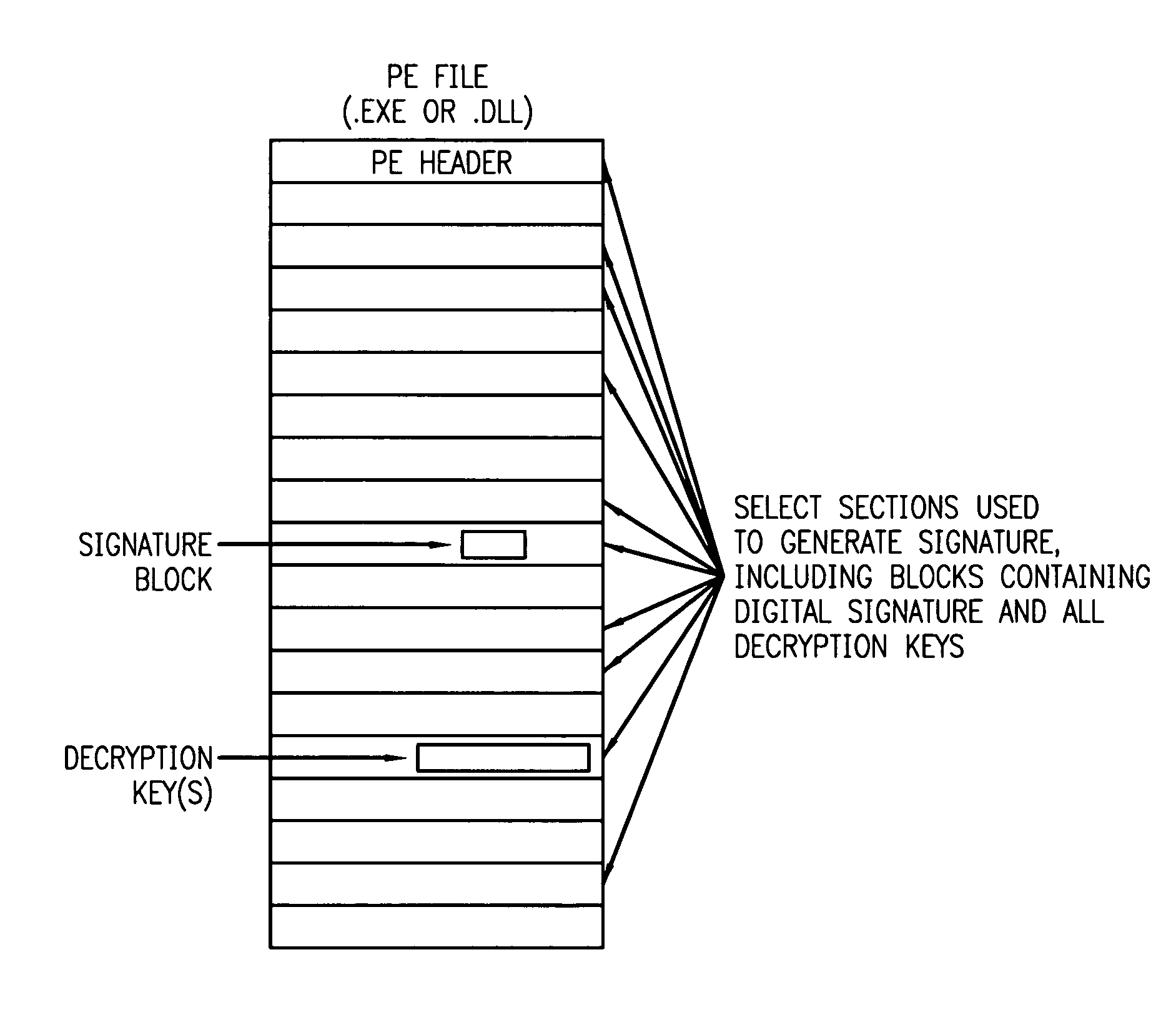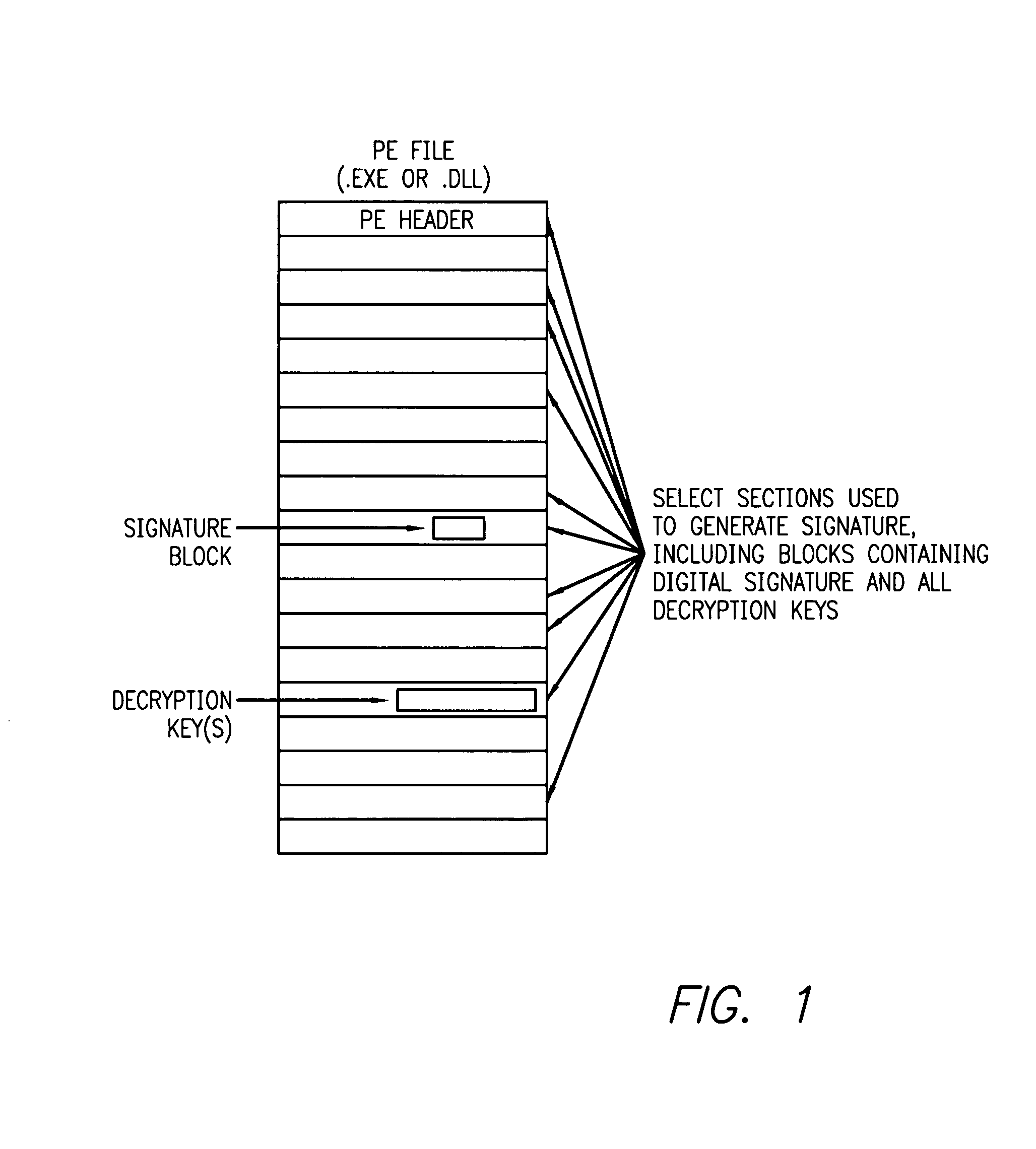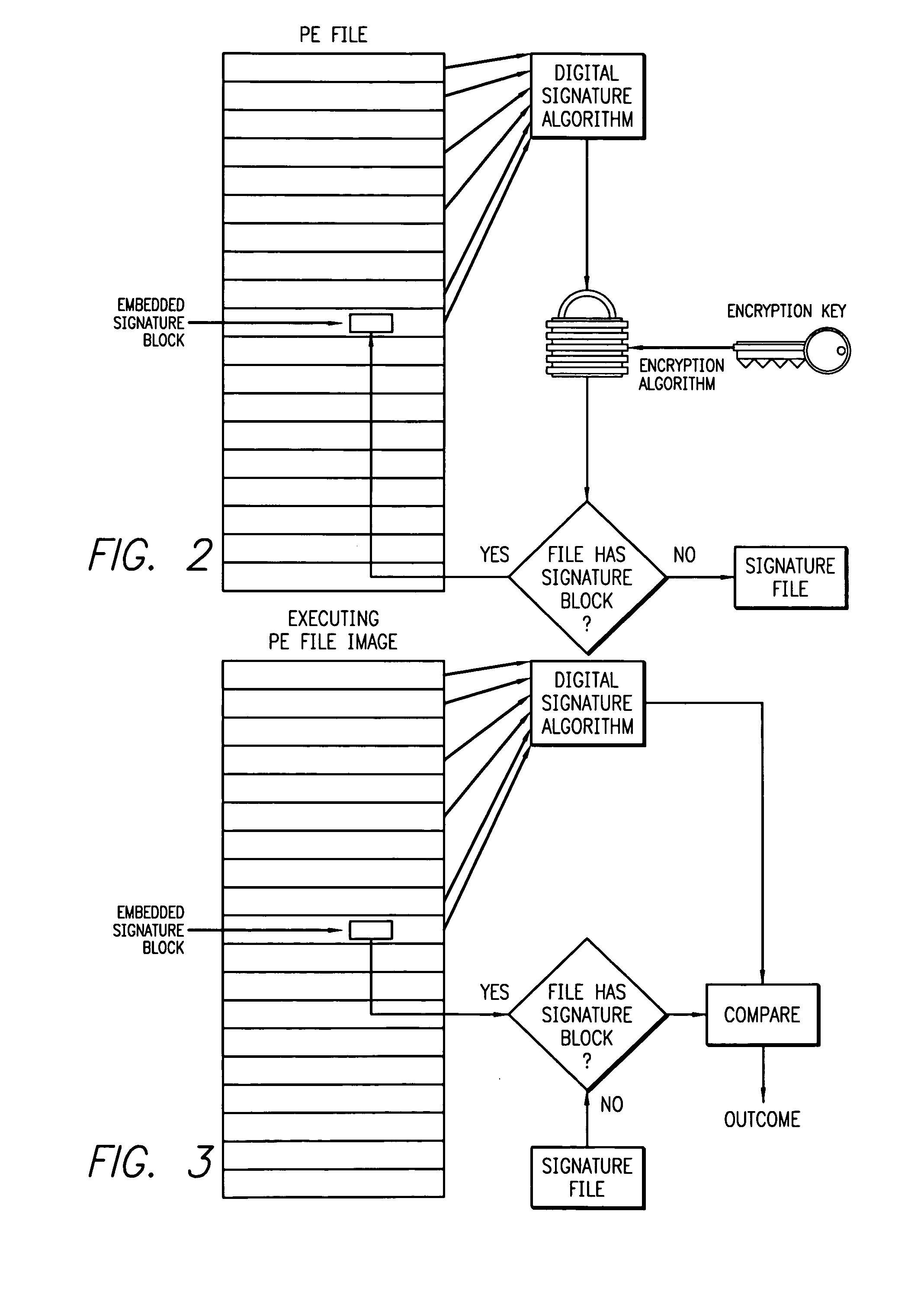Software component authentication via encrypted embedded self-signatures
a software component and self-signature technology, applied in the field of software components, can solve the problems of component lifetime, little purpose served by making the decryption key secret, and the most vulnerable of validations
- Summary
- Abstract
- Description
- Claims
- Application Information
AI Technical Summary
Problems solved by technology
Method used
Image
Examples
Embodiment Construction
[0020] The problem of counterfeiting or hacking componental software to make it operate in way unintended by or contrary to the intents or requirements of either the original module provider or the terms of a license under which the module is obligated to operate is addressed by this invention. The core concept is a authentication process in which the “authenticable credentials” of a given software component or other executable module are either embedded in the module's disk image or in a separate signature file in such a manner that: [0021] 1. the integrity of the software component or other executable module can be confirmed (i.e., it has not be substituted or modified in a manner that might leave it in a state which could result in the module functioning in a manner inconsistent with the intent of either the original module provider or the terms of a license under which the module is obligated to operate), and [0022] 2. the signature is “vouched for” by a trusted signing authorit...
PUM
 Login to View More
Login to View More Abstract
Description
Claims
Application Information
 Login to View More
Login to View More - R&D
- Intellectual Property
- Life Sciences
- Materials
- Tech Scout
- Unparalleled Data Quality
- Higher Quality Content
- 60% Fewer Hallucinations
Browse by: Latest US Patents, China's latest patents, Technical Efficacy Thesaurus, Application Domain, Technology Topic, Popular Technical Reports.
© 2025 PatSnap. All rights reserved.Legal|Privacy policy|Modern Slavery Act Transparency Statement|Sitemap|About US| Contact US: help@patsnap.com



